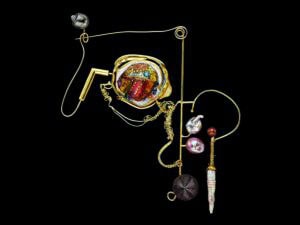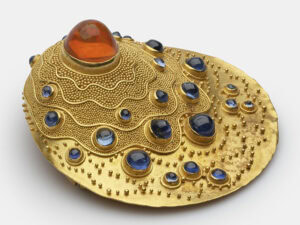Assemble, the Crafts Council’s 2012 annual conference, was held this year in the prestigious headquarters of the Royal Institute of British Architects in Portland Place, London on September 20. Its theme: The contribution craft makes to innovation and enterprise and the relationship between making, science and technology.
This was a conference well overdue, given our economic climate and deplorable environmental situation, and it certainly produced some fascinating insights into cross-disciplinary research that would give many of us working with scientists and research engineers something to think about.
Moira Sinclair from Arts Council England (ACE) delivered an impressive welcome address with a set of figures illustrating their huge support for the crafts, including an investment of £4.5 million in the Crafts Council, Craftspace and the Bernard Leach Trust among others, as well as in collaborative work between makers and the heritage sector. The crafts sector was the third beneficiary in ACE’s portfolio this year. ACE and the Crafts Council’s strategic plan is to re-model the idea of collaboration by introducing the work of makers to new audiences, placing artists and craft makers with ambitious collaborative projects into libraries, for example, the aim being that museums and libraries start thinking differently in the 21st century.
The Digital R&D Fund for the Arts was announced: a partnership between the Arts Council, Nesta and the Arts and Humanities Research Council (AHRC). This is to encourage collaboration between the arts, digital technology providers and the research community in order to undertake experiments from which the wider arts and cultural sector can learn. The £7 million fund will be made available over three years to support research and development projects that use digital technology to enhance art’s audience reach and/or explore new business models.
Sinclair’s message was clear: collaboration, cross-fertilization and new audience reach are crucial for economic recovery. It’s what makes the sector dynamic and forward thinking. ‘As makers, crafts is part of our cultural DNA,’ she rightly pointed out, ‘and central to the industrial revolution. It would be good to see makers at the head of the technological revolution,’ she concluded, convinced that our unique way of seeing the world could contribute to current global debate.
Despite the difficult economic circumstances, however, keynote speaker Ed Vaizey, Minister for Culture, Communications and Creative Industries, urged us above all to not lose ambition. He enthused about the exhibition The Power of Making at the Victoria and Albert Museum as being the most popular free exhibition in the museum’s history. He underlined the significant increase in lottery funding and the new plans to encourage our younger audiences in schools. Vaizey’s passion for technology permeated his talk as he declared cutting edge manufacturing as a massive opportunity for new thinking in contemporary arts. It is true that many craft makers today are deeply engaged in technologies such as laser and 3D printing systems, but he was concerned that those outside the sector are not yet as familiar with this activity as they should be.
One of the most comprehensive surveys into contemporary crafts of the last ten years, Craft in an Age of Change, has shown that of the 2000 makers surveyed, more than half are using new technologies like 3D printing and laser and most of those are using it constantly. ‘These technologies,’ he said, ‘are changing the profile of makers and key to these changes is the engagement between art, science and technology.’ As a prime example, Vaizey talked of the extraordinary case of the world’s first tissue engineering organ transplant in July 2011, where the life of a throat cancer patient was saved thanks to the work of glass artist Matt Durran, working with the Royal Free Hospital. Vaizey made a clear call for artists and craft makers to share their expertise and understanding with industry in order to challenge manufacturing in new directions, encouraging the production of new creative content. This he followed by announcing three new residences available under the new scheme Watershed, involving intense periods of work where artists will be working with technology.
Keynote speaker Marie O’Mahoney, Professor of Advanced Fashion and Textiles at Ontario College of Art and Design (OCAD) University of Ontario and visiting Professor of the University of the Arts London, presented us with questions more related to the wider benefits of collaborative work and whether craft is helping to bring manufacturing back to this country. She shared her concern that once lost it would be difficult to bring manufacturing back, having been replaced by cheap imports. ‘Perhaps technology is increasingly necessary to keep these skills.’ From her perspective the main reasons for makers to collaborate with industry are for the wider benefit of social, environmental and economic values and, importantly, their interlinking.
She touched on many collaborative partnerships to illustrate work, like laser sintered garments, fine layers of 3D printed nylon designed after observing scanning electron micrographs of the body’s skeletal structures. The dress took weeks to print but, given the pace of advancing technology, she hopes that ‘in five years we will be at another place.’ Her expectation is that these technologies will not only prevent the demise of craft techniques, but that the process will be reversed, adding fuel to Vaizey’s discussion that craft makers are necessary to inform the technology. A catalytic dress by Helen Storey was particularly intriguing, collecting pollutants from the air as it’s worn and bringing environmental discussions to new audiences.
Ultimately O’Mahoney’s message was clear: Collaborate to get fresh ideas; Collaborate to learn new methodologies; Collaborate to inform your own practice. She was careful to say that collaborations are also about listening and parking the ego, but fundamentally, it is the thinking process and material knowledge that crafts people bring to the table. It is important that this kind of message reaches makers out there, who in their likely isolation might not be so convinced of their status and value.
With an expectant audience already listening hard, the filmed discussion that continued between a surgeon and a tailor was well timed and totally engaging. The Craft of Surgery delivered an accurate snapshot into what can be expected from such partnerships. Roger Kneebone, Professor of Surgical Education, Imperial College London and Joshua Byrne of Byrne & Burge, appear filmed in conversation, making fascinating comparisons between their trades. While the camera hovered over neatly aligned instruments, we were able to see how disturbingly similar the cutting implements for surgery and pattern cutting actually are. The conversation turned from comparing sewing needles and scissors for cutting different types of materials or skin, to stitching and the danger in surgery of not tying them up securely and the consequences of a badly sewn suit.
‘Ah . . . surgeons can’t do that,’ Kneebone commented, as Byrne licked some cotton to thread his needle. But they had so very much in common, from learning by repetition, which creates knowledge, to addressing the physiological changes in the client once fitted, either for a suit or from plastic surgery, and issues of customer relationship that require both professions to understand the individual. Either way, the growing curiosity shown in each other’s practice was both infectious and clearly central to the success of any future partnership between them.
Grant Gibson, editor of Crafts magazine, then led a conversation between Dr Sarah Pape, Consultant Plastic Surgeon and Rhian Solomon, maker and founder of sKINship. Solomon, whose interest also lies in the crossover of skin and cloth, had taken Pape to Savile Row to observe pattern cutting and tailoring practice. ‘Knit stretches in all directions like skin does,’ she noted. Pape, who had grown up knitting, weaving and collecting wool off a farm, informed us that ‘Plastic surgery started in the first World War, where surgeons had to start with what was missing.’ They worked on trench warfare injuries with artists and sculptors documenting injuries, making clay models from patients. The standard operations that now exist, she informed us, don’t always allow for the individual, yet burn scars differ from one patient to another, which was where Solomon’s interest in the individual was attractive to Pape as a surgeon. Solomon agreed that losing the fear to jump into other professions is her greatest challenge.
Continuing on the textiles theme, Julian Ellis OBE, President of Ellis Developments, explained manufacturing of structural composites using embroidery techniques. His illustrations showed how swapping carbon fibre for polyester thread for bio-ligaments meant better structural health monitoring. Stents made from super-elastic memory wire embroidered over elastic and the world’s first highly flexible clavicle replacement were impressive examples. His vision of the future consisted of a method of laying down fibres that encouraged blood and nerves to grow and introducing these, with some of the patient’s fat, into a bioreactor to replace body parts.
The conversation got more challenging as Suzanne Lee, maker and founder of Biocouture, spoke of the irony of finding creativity in what the future of science holds. She asked us to imagine growing our own clothing by getting bacteria to produce cellulose. Materials like vegetable leather to make jackets were all part of her illustrated talk. Similarly, Dr Mitchell Joachim, from Terreform One, New York, spoke of growing houses cut from engineered wood and using waste as source material for brick making.
The subject of new technology is always a good catalyst for the argument that it de-skills the making professions and Jamie Hall, jeweler, proposed this was already evident as we enter an age where 3D printers could construct themselves. Karin Paynter, freelance creative and technical consultant, went on to remind us that companies were now willing to adopt machines for jewelers, such as lasers for spot welding, suggesting that suppliers were more in touch with makers than before. Examples were the FabLab for small scale manufacture and Laser EOS approaching Cooksons to develop precious metal sintering. XRF machines for metal analysis are now used in the UK’s Assay Offices and new developments with handheld devices are in the pipeline.
The conference illustrated exciting results from unusual collaborative work and certainly called for more makers to be involved with scientific exploration, backing it with some promising funding. Is it enough, however, to deliver this information to an already receptive audience?
It was disappointing that the programme did not include more scientists who could engage us with their views on extreme interdisciplinary work. An important example in this discussion is Mark Miodownik, Professor of Materials and Society (UCL) and Director of the UCL Institute of Making, who in 2003 wrote emphatically on the value of teaching art within the engineering curriculum. (Miodownik, 36-42) He put his idea into practice by including an art module in his teaching programme, convinced that the knowledge that artists possess and their passion for materials should be adopted by his student engineers. In 2007, he gave a paper called ‘Strange Material’ to an audience of jewelers in Manchester at the Ars Ornata Europeana conference, urging the materials arts community to work closer with science to reap more of the benefits at the root of innovation. He insisted that materials science could benefit from the materials arts community because they provide an instinctive, aesthetic and tactile approach to materials. And his team has always included artist Zoe Laughlin who works with aerogel, developed by NASA, to expose its extraordinary properties. The idea that exchanging methodologies between disciplines can strengthen each other’s specialism is crucial.
Ian Goldin from the Oxford Martin School declared recently that ‘we are very un-joined up in our vision of the future’ and that we will need many more people coming closer together in the twenty-first century. (Goldin) He predicts more systematic shocks that we will need to manage collectively, the current economic crisis being a typical example. ‘One thing is clear,’ he concluded. ‘There will be many more big surprises.’ Another sobering report on climate change by John Vidal, environmental editor for The Guardian, exposes more facts on how we have managed single-handedly to change the face of the planet by causing excessive melting of polar ice. (Vidal)
In these defining moments in human history it is imperative that the arts work alongside the sciences and technologists, not least because the material arts’s methodology of lateral thought, creativity and personal investment has always led to alternative ways of resolving problems. Our main hurdle, however, is to secure the interest of science and engineering for these collaborations in the first place. Imagine an astronomer taking similarly intrepid steps into art and design hoping to develop his or her research. Why are science and research engineers not asking the arts to work with them in the first place? And why are we not inviting scientists or engineers to do residences in art and design?
If we want to work more collaboratively with science and engineering we should be staging conferences that invite all communities in equal measure, so that none is speaking to their own audience exclusively. In this way, artists like Solomon might not feel quite so reticent about stepping into other professions and we would stand a chance of developing a common language with which to move forward from the beginning rather than waiting to see what the future of science holds.

This was a conference well overdue, given our economic climate and deplorable environmental situation, and it certainly produced some fascinating insights into cross-disciplinary research that would give many of us working with scientists and research engineers something to think about.
Moira Sinclair from Arts Council England (ACE) delivered an impressive welcome address with a set of figures illustrating their huge support for the crafts, including an investment of £4.5 million in the Crafts Council, Craftspace and the Bernard Leach Trust among others, as well as in collaborative work between makers and the heritage sector. The crafts sector was the third beneficiary in ACE’s portfolio this year. ACE and the Crafts Council’s strategic plan is to re-model the idea of collaboration by introducing the work of makers to new audiences, placing artists and craft makers with ambitious collaborative projects into libraries, for example, the aim being that museums and libraries start thinking differently in the 21st century.
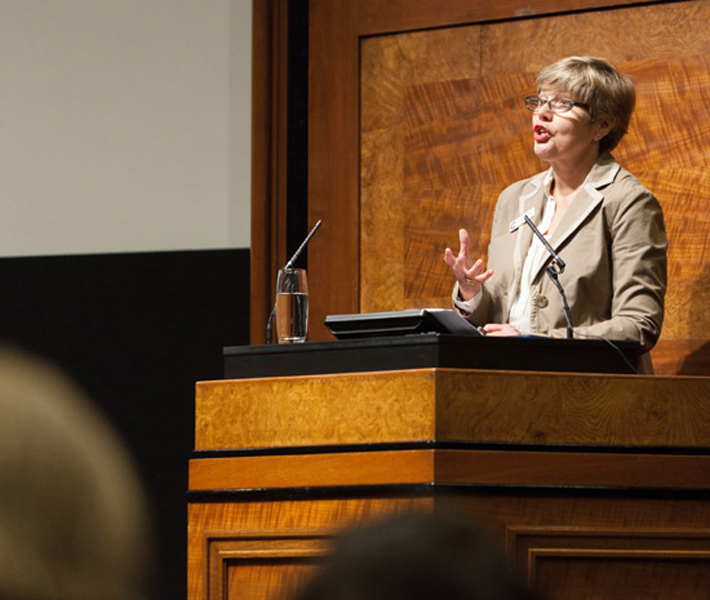
Sinclair’s message was clear: collaboration, cross-fertilization and new audience reach are crucial for economic recovery. It’s what makes the sector dynamic and forward thinking. ‘As makers, crafts is part of our cultural DNA,’ she rightly pointed out, ‘and central to the industrial revolution. It would be good to see makers at the head of the technological revolution,’ she concluded, convinced that our unique way of seeing the world could contribute to current global debate.
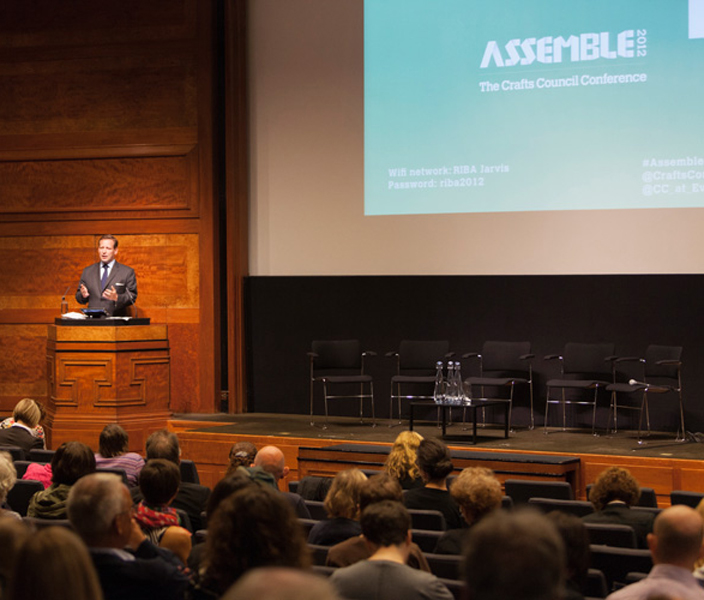
One of the most comprehensive surveys into contemporary crafts of the last ten years, Craft in an Age of Change, has shown that of the 2000 makers surveyed, more than half are using new technologies like 3D printing and laser and most of those are using it constantly. ‘These technologies,’ he said, ‘are changing the profile of makers and key to these changes is the engagement between art, science and technology.’ As a prime example, Vaizey talked of the extraordinary case of the world’s first tissue engineering organ transplant in July 2011, where the life of a throat cancer patient was saved thanks to the work of glass artist Matt Durran, working with the Royal Free Hospital. Vaizey made a clear call for artists and craft makers to share their expertise and understanding with industry in order to challenge manufacturing in new directions, encouraging the production of new creative content. This he followed by announcing three new residences available under the new scheme Watershed, involving intense periods of work where artists will be working with technology.
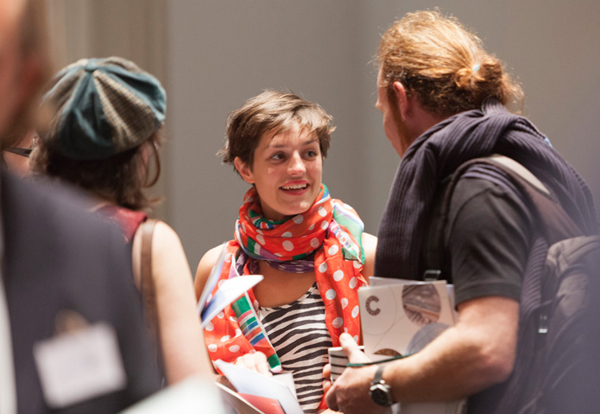
She touched on many collaborative partnerships to illustrate work, like laser sintered garments, fine layers of 3D printed nylon designed after observing scanning electron micrographs of the body’s skeletal structures. The dress took weeks to print but, given the pace of advancing technology, she hopes that ‘in five years we will be at another place.’ Her expectation is that these technologies will not only prevent the demise of craft techniques, but that the process will be reversed, adding fuel to Vaizey’s discussion that craft makers are necessary to inform the technology. A catalytic dress by Helen Storey was particularly intriguing, collecting pollutants from the air as it’s worn and bringing environmental discussions to new audiences.
Ultimately O’Mahoney’s message was clear: Collaborate to get fresh ideas; Collaborate to learn new methodologies; Collaborate to inform your own practice. She was careful to say that collaborations are also about listening and parking the ego, but fundamentally, it is the thinking process and material knowledge that crafts people bring to the table. It is important that this kind of message reaches makers out there, who in their likely isolation might not be so convinced of their status and value.
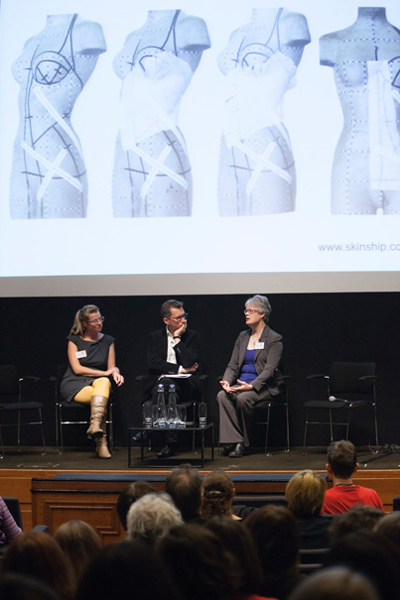
‘Ah . . . surgeons can’t do that,’ Kneebone commented, as Byrne licked some cotton to thread his needle. But they had so very much in common, from learning by repetition, which creates knowledge, to addressing the physiological changes in the client once fitted, either for a suit or from plastic surgery, and issues of customer relationship that require both professions to understand the individual. Either way, the growing curiosity shown in each other’s practice was both infectious and clearly central to the success of any future partnership between them.
Grant Gibson, editor of Crafts magazine, then led a conversation between Dr Sarah Pape, Consultant Plastic Surgeon and Rhian Solomon, maker and founder of sKINship. Solomon, whose interest also lies in the crossover of skin and cloth, had taken Pape to Savile Row to observe pattern cutting and tailoring practice. ‘Knit stretches in all directions like skin does,’ she noted. Pape, who had grown up knitting, weaving and collecting wool off a farm, informed us that ‘Plastic surgery started in the first World War, where surgeons had to start with what was missing.’ They worked on trench warfare injuries with artists and sculptors documenting injuries, making clay models from patients. The standard operations that now exist, she informed us, don’t always allow for the individual, yet burn scars differ from one patient to another, which was where Solomon’s interest in the individual was attractive to Pape as a surgeon. Solomon agreed that losing the fear to jump into other professions is her greatest challenge.
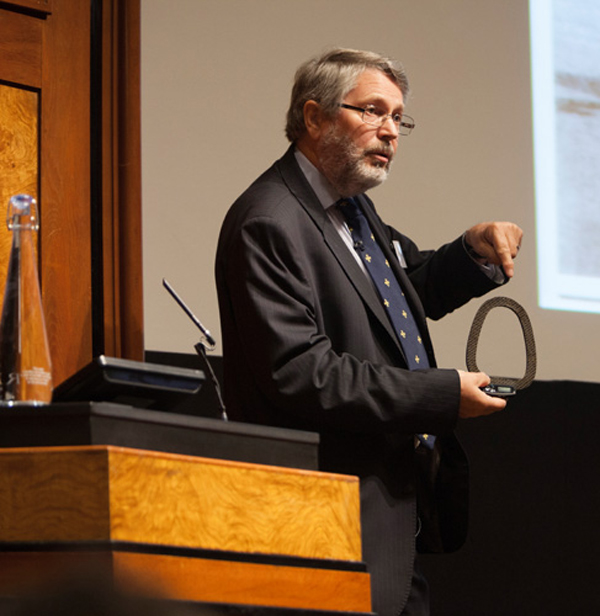
The conversation got more challenging as Suzanne Lee, maker and founder of Biocouture, spoke of the irony of finding creativity in what the future of science holds. She asked us to imagine growing our own clothing by getting bacteria to produce cellulose. Materials like vegetable leather to make jackets were all part of her illustrated talk. Similarly, Dr Mitchell Joachim, from Terreform One, New York, spoke of growing houses cut from engineered wood and using waste as source material for brick making.
The subject of new technology is always a good catalyst for the argument that it de-skills the making professions and Jamie Hall, jeweler, proposed this was already evident as we enter an age where 3D printers could construct themselves. Karin Paynter, freelance creative and technical consultant, went on to remind us that companies were now willing to adopt machines for jewelers, such as lasers for spot welding, suggesting that suppliers were more in touch with makers than before. Examples were the FabLab for small scale manufacture and Laser EOS approaching Cooksons to develop precious metal sintering. XRF machines for metal analysis are now used in the UK’s Assay Offices and new developments with handheld devices are in the pipeline.

It was disappointing that the programme did not include more scientists who could engage us with their views on extreme interdisciplinary work. An important example in this discussion is Mark Miodownik, Professor of Materials and Society (UCL) and Director of the UCL Institute of Making, who in 2003 wrote emphatically on the value of teaching art within the engineering curriculum. (Miodownik, 36-42) He put his idea into practice by including an art module in his teaching programme, convinced that the knowledge that artists possess and their passion for materials should be adopted by his student engineers. In 2007, he gave a paper called ‘Strange Material’ to an audience of jewelers in Manchester at the Ars Ornata Europeana conference, urging the materials arts community to work closer with science to reap more of the benefits at the root of innovation. He insisted that materials science could benefit from the materials arts community because they provide an instinctive, aesthetic and tactile approach to materials. And his team has always included artist Zoe Laughlin who works with aerogel, developed by NASA, to expose its extraordinary properties. The idea that exchanging methodologies between disciplines can strengthen each other’s specialism is crucial.
Ian Goldin from the Oxford Martin School declared recently that ‘we are very un-joined up in our vision of the future’ and that we will need many more people coming closer together in the twenty-first century. (Goldin) He predicts more systematic shocks that we will need to manage collectively, the current economic crisis being a typical example. ‘One thing is clear,’ he concluded. ‘There will be many more big surprises.’ Another sobering report on climate change by John Vidal, environmental editor for The Guardian, exposes more facts on how we have managed single-handedly to change the face of the planet by causing excessive melting of polar ice. (Vidal)
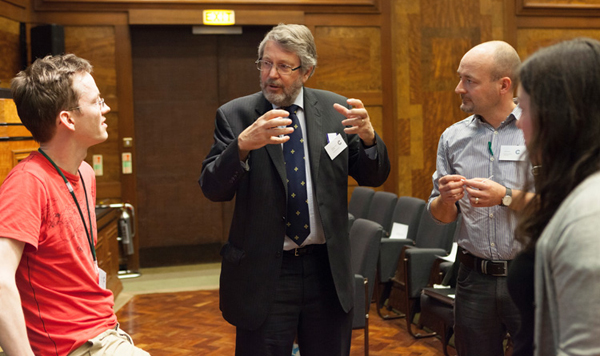
If we want to work more collaboratively with science and engineering we should be staging conferences that invite all communities in equal measure, so that none is speaking to their own audience exclusively. In this way, artists like Solomon might not feel quite so reticent about stepping into other professions and we would stand a chance of developing a common language with which to move forward from the beginning rather than waiting to see what the future of science holds.

